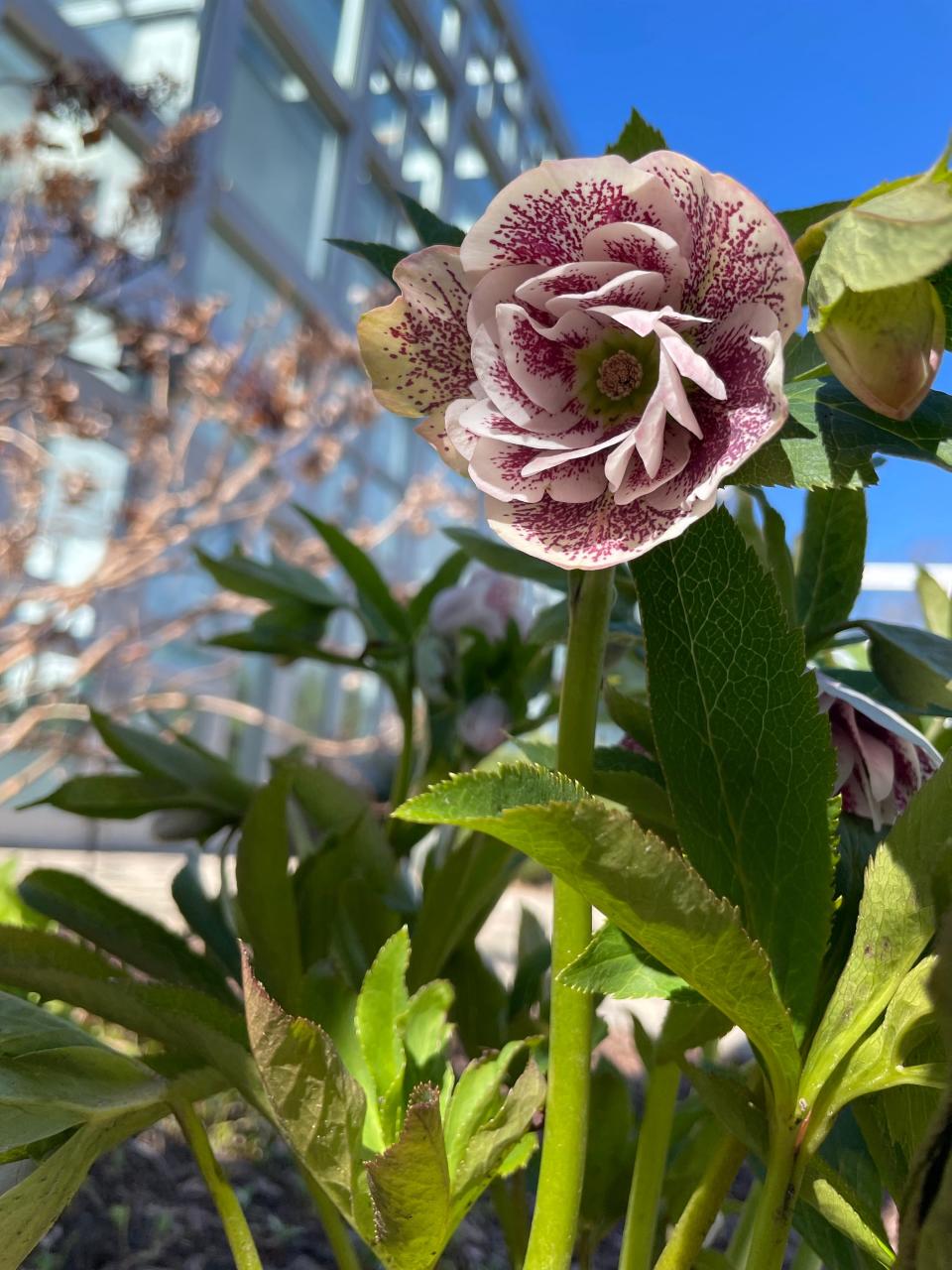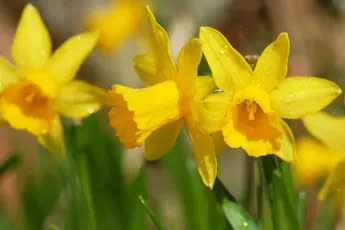These winter blooming flowers in NJ signal spring is almost here | Gardener State
Here in New Jersey, late February can tend to be gray and slushy. Personally, the most relaxing activity for me is to curl up with a good book, a warm cup of tea and occasionally stoke some burning logs in the fireplace.
But when venturing out is necessary, some magical colors can be found to contrast with the gray. Among the first colors I encounter down my front stairs peeking out by the dark green yews are the pinkish white flowers of Helleborus, common name Hellebore.
Hellebores, in the Buttercup family, brave the elements when few others do. This perennial is long-lived, prefers evenly moist but well-drained, sandy, humus-rich soil in light to partial shade. Living close to the bay, as I do, my hellebore thrives in the winter and seems to enjoy the shade from the yew in the summer. It grows up to 2 feet and wide. Through trial and error, I’ve found it does not take kindly to neighboring floppy plants. A spring chore on my list is to clear the encroaching rhizomes from other emerging flowers creeping into the area around my Hellebore.

Another winter flowering plant seemingly telling the world it is almost Spring is Eranthis, common name Winter aconite, also a member of the Buttercup family. This small, perky plant can be found in sunnier locations that grow from small tuberous roots. It is only 2 to 4 inches tall and 4 to 6 inches wide with yellow, up-facing cups. It prefers rich humus or loamy soil in a spot with plenty of spring sun. The winter aconite is a robust plant that will self-sow, potentially forming large sweeps of congested colonies if not tended to.
More: Creating biodiversity one landscape at a time | Gardener State
Just beyond the Hellebore and yews in my garden is my Hamamelis tree, H. virginiana (common witch hazel). It grows in full sun on the upper edge of my rain garden, receiving a liberal amount of moisture. It doesn’t typically require pruning, but I like to keep it just under 12 feet tall. Mine has small, yellow-curled blossoms that appear when the tree is leafless. I find the blooms to be unique and very unusual. The blossoms open and close in response to warm and cool days. I understand the witch hazel gets its name from the fact that the forked twigs are sometimes used as divining rods in seeking water underground. Personally, besides enjoying the blooms for I have for years distilled the twigs to use as a lotion after I shave.

Another bloom that signals the end of winter and the start of a new gardening season is the Crocus. A squat groundcover in the Iris family growing 4 to 6 inches tall and wide, they are yellow-throated with a blush of white and lilac-purple petals. These tough but attractive blooms are seldom damaged by a dusting of late-winter snow adding a beautiful lavender to the winter scape.
Along with the crocus as a spring harbinger is the Narcissus, common name Daffodil. They are in the Amaryllis family. The tips of the gray-green foliage first emerge, often as early as January. As temperatures moderate, the elongating foliage tufts for the teardrop-shaped buds signal the end of winter. The flowers have a ring of three petals and three petal-like sepals. In the centers of the flowers are funnel-shaped cups of varying length called the corona. Together they form flowers that vary in size, shape and color according to species or hybrid origin. There are over 50 naturally occurring species readily available as nursery-propagated bulbs. Daffodils prefer full sun to partial shade in moist, well-drained, humus-rich soil. They mix well with shrubs and perennials or naturalize them in rough grass in a meadow or lawn or use the smaller species in rock gardens.

A winter species that I do not yet have but is on my list is the indigo-blue flowers of Blue Jasmine, common name is Clematis. This is an herbaceous climber, some with bell-shaped, others with star-shaped blue flowers measuring up to 2 inches each. The flowers open in succession into the summer. Most species of Winter Jasmine prefer a cool, moist humus-rich soil for their root system and full sun for their blooms. They are best with some support systems for the vines to grow and partner well with shrubs and small trees.
The late winter landscape here in New Jersey bursts with colors and life. Besides the special flowers with their blooms, there is the evergreens mixed with the berries on the hollies, the bark of the trees, the seed heads on the dune grasses frequented by birds. All to be taken in on a simple winter stroll. Of course, afterward there is the cozy chair, warm cup of tea and a good book back beside my blazing fireplace.
Dennis McNamara is an agriculture program associate at the Rutgers Cooperative Extension of Monmouth County.
This article originally appeared on MyCentralJersey.com: These NJ winter blooming flowers signal spring is near

